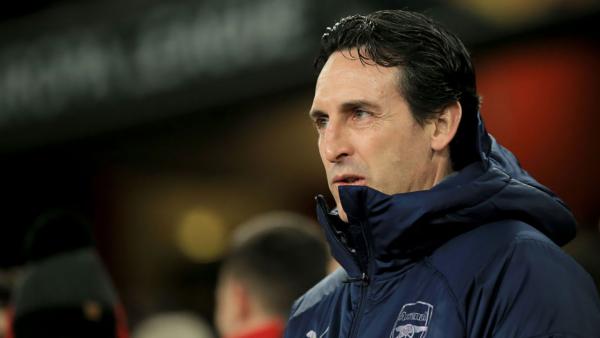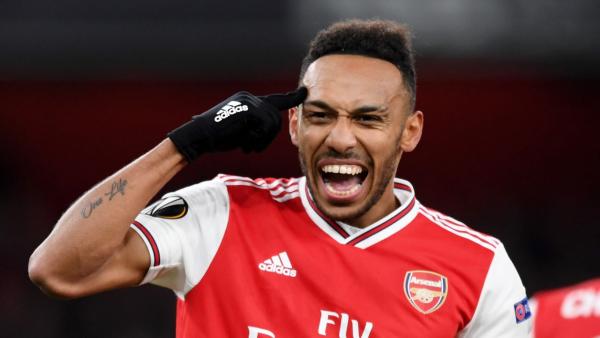Arsenal’s 4-0 win over Newcastle on Sunday was the perfect encapsulation of the Mikel Arteta project so far. As the dial gradually turned up through the 90 minutes – from the worryingly vacant first half to the flurry of goals after the break to the 35-pass Mesut Ozil strike in injury time – we saw the improving trajectory of this side.
They are very much in transition, prone to lapses in concentration and shrinkage into their old habits, but the journey under the new manager is very much one to get excited about. Tactically, the Spaniard has already shown just how much he learned under Pep Guardiola’s tutelage.
The 2-3-5 formation
Arteta has followed the modern trend of playing five up front who, by alternating dropping off and making runs in behind, ensure no two attackers occupy the same zone of the pitch horizontally or vertically. The idea is to overload the opposition in key areas while ensuring midfield and defence are secured by the use of an inverted right-back.
The left-back provides overlapping runs on that side as the winger cuts inside, the right winger gives width on the right and the striker and the attacking midfielder hold the other two central spots. This has been a consistent feature so far and appears likely to remain for the long haul, bringing some good performances out of Mesut Ozil (benefitting from greater organisation in those moving around him) and getting nominal left-back Bukayo Saka into advanced positions.
Ainsley Maitland-Niles or Hector Bellerin have the most complex role of all, typically inverting into central midfield to form the 2-3-5 or, depending on the opposition, dropping into a centre-back position to form a 3-2-5.
Key attacking moves
That’s the basic shape, but more specifically one of the key features we’re beginning to see is piercing under-lapping runs from the left winger. Gabriel Martinelli and Pierre-Emerick Aubameyang have both excelled in a role that allows them to arrive late into the penalty box, and therefore unseen, getting space where they would be drowned out as a central striker. The relationship between these two positions is crucial.
Elsewhere, Nicolas Pepe lurks in the right half-space for long periods and looks to get himself into dangerous areas towards the back post, if the ball is being moved down the left. This sees him alternate between playing wide right, where he takes on his man, or making runs in between the opposition left-back and left centre-back. His link-up play with Alexandre Lacazette is vital – although so far we have only seen it work in small bursts.
From midfield, Ozil is curbed slightly from his old free role and is expected to stay high up the pitch, with mixed results, while Lucas Torreira or Dani Ceballos is asked to hit quick, assertive passes into these front five. The same can be said of the Gunners’ centre-backs, who are happy to launch longer passes into the channels to do so; Arteta’s side play with greater natural width than under Unai Emery.
However, as the 35-pass goal against Newcastle (and a similar 18-pass goal against Crystal Palace) has shown, will patiently hold possession for long periods if necessary, waiting for a gap to open for that line-breaking pass.
Screening against the counter-attack
Like Guardiola, it’s important to Arteta how the high-pressing possession football keeps the opponent away from their own goal. In theory, Arsenal are holding very specific positions during extended periods of holding the ball in order to cut off the counter-attack before it gets going.
Xhaka plays a big part in this by holding a deeper position and leaning to the left, limiting his presence in the final third. He is definitely benefitting from the simplicity of his task. On the other side, Bellerin or Maitland-Niles performs a similar role.
Overall compression between the defensive and attacking lines is paramount, limiting the amount of space for teams to play through, and there has been a clear drive to squeeze together at all times. Whether high up the pitch or low.

But a lot of work to be done…
Psychology is as important as tactics, and it would certainly appear Arteta commands respect. His team talk against Leeds United in the FA Cup, he ‘shouted a lot’ according to Lacazette, inspired a big change in performance levels. One assumes Newcastle on Sunday was similar given how lacklustre Arsenal were in the first half in arguably the worst 45 minutes under Arteta so far.
That display shows how much work lies ahead. Indeed all of the tactical points raised here have only applied some of the time and rarely for a full game. It will take a long time for them to unlearn the confusing methods of Emery.
Arteta will need new signings, too, particularly in central defence. Aside from being less error-prone, the manager will be searching for defenders who can carry the ball out of the back and play a line-splitting pass.
It is unlikely the issues will be ironed out before the end of the season, making winning the Europa League (7/1) or FA Cup (12/1) unlikely, but by the beginning of next year – after a full summer diligently learning his methods – Arsenal should be transformed.
Source: Betfair Premier League




